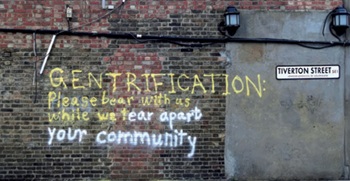Drop-in hydrocarbon fuels
Drop-in hydrocarbon biofuels, also called green hydrocarbon biofuels or renewable hydrocarbon biofuels and are fuels produced by a variety of biological, thermal, and chemical processes. They are chemically identical to petroleum gasoline or diesel fuel and so compatible with existing petroleum refining and distribution infrastructure but with the advantage of being renewable.
Many drop-in fuels are produced by converting industrial chemical compounds derived from animal and vegetable oil or fat (oleochemicals) such as used cooking oil, tallow or fats. However the processes such as gasification, pyrolysis and hydrothermal liquefaction (HTL) are a way to produce drop-in biofuels from biomass stocks.
Discussion's around the sustainability of biofuels at scale often focus on the ability to replenish stocks of the feed materials, which a greater challenge for oleochemicals than biomass, but in both cases the challenge is the land area required to produce the feeds, which may be used for food production. The main advantage of liquid biofuels from oleochemcals on the small scale is the availability of supply from recycled cooking oils and the ability to almost directly use these in vehicles. Biomass can also be sourced from reclaimed materials such as timber waste but needs to be processed in larger plants to create a useful fuel.
[edit] Related articles on Designing Buildings
- Advanced bioenergy.
- Biogas.
- Biomass CHP.
- Biomass.
- Biomethane.
- Combined heat and power (CHP).
- District energy.
- Energy.
- Environmental impact of biomaterials and biomass (FB 67).
- Feed in tariff.
- Fossil fuel.
- Methane pyrolysis.
- Solid biomass.
- Stove.
- Renewable heat incentive.
- Types of boiler.
- Types of fuel.
- Wood pellet mill basics.
Featured articles and news
A threat to the creativity that makes London special.
How can digital twins boost profitability within construction?
A brief description of a smart construction dashboard, collecting as-built data, as a s site changes forming an accurate digital twin.
Unlocking surplus public defence land and more to speed up the delivery of housing.
The Planning and Infrastructure bill oulined
With reactions from IHBC and others on its potential impacts.
Farnborough College Unveils its Half-house for Sustainable Construction Training.
Spring Statement 2025 with reactions from industry
Confirming previously announced funding, and welfare changes amid adjusted growth forecast.
Scottish Government responds to Grenfell report
As fund for unsafe cladding assessments is launched.
CLC and BSR process map for HRB approvals
One of the initial outputs of their weekly BSR meetings.
Architects Academy at an insulation manufacturing facility
Programme of technical engagement for aspiring designers.
Building Safety Levy technical consultation response
Details of the planned levy now due in 2026.
Great British Energy install solar on school and NHS sites
200 schools and 200 NHS sites to get solar systems, as first project of the newly formed government initiative.
600 million for 60,000 more skilled construction workers
Announced by Treasury ahead of the Spring Statement.
The restoration of the novelist’s birthplace in Eastwood.
Life Critical Fire Safety External Wall System LCFS EWS
Breaking down what is meant by this now often used term.
PAC report on the Remediation of Dangerous Cladding
Recommendations on workforce, transparency, support, insurance, funding, fraud and mismanagement.
New towns, expanded settlements and housing delivery
Modular inquiry asks if new towns and expanded settlements are an effective means of delivering housing.






















